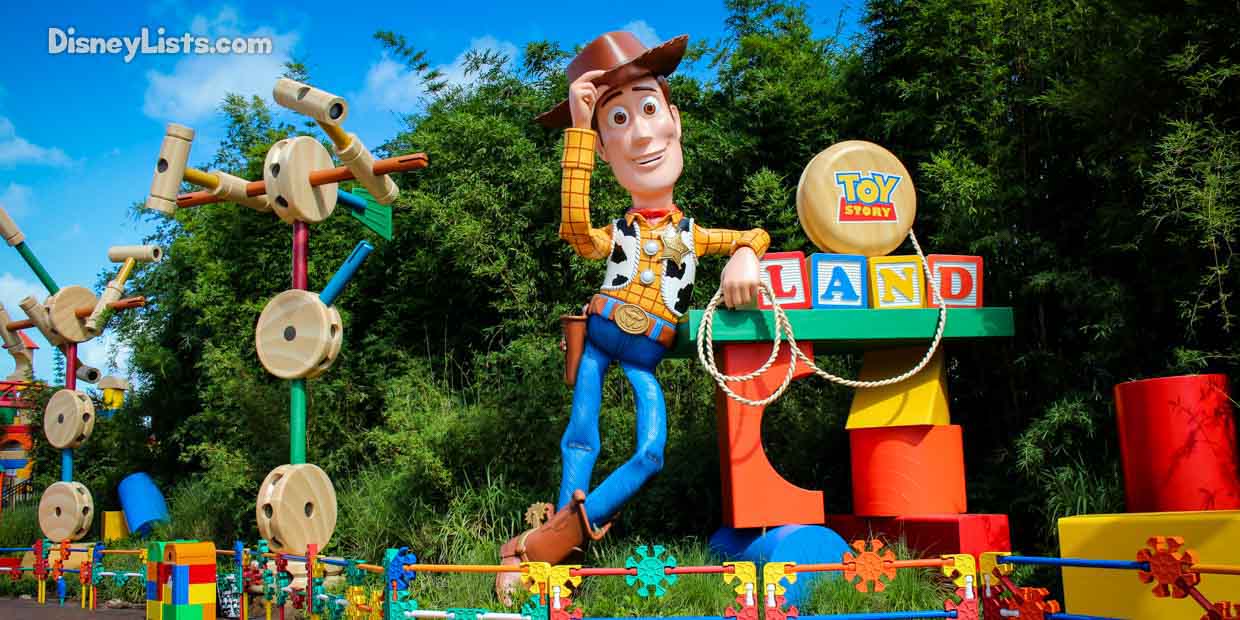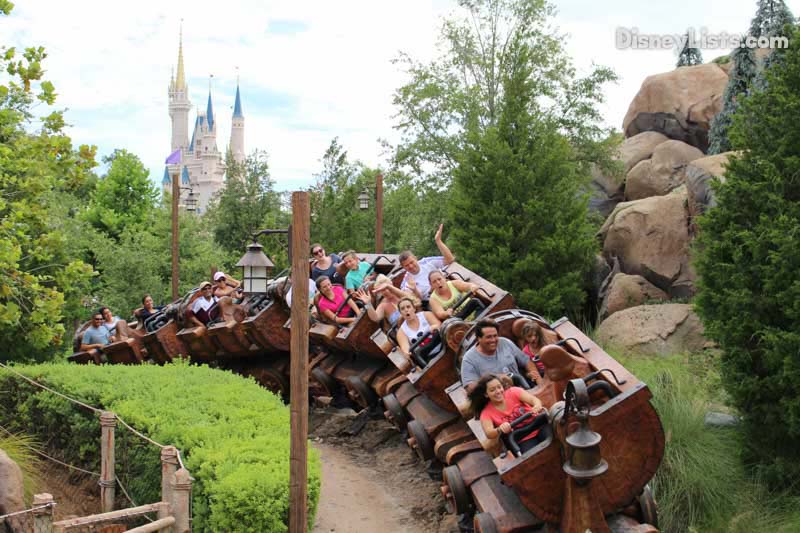A Walt Disney World Retrospective: Ten Magical Milestones of the 2010s

2005 was the end of an era for the Walt Disney Company. Michael Eisner, the company’s CEO, stepped down, making way for a new leader, Bob Iger, to come in and bring a new, fresh direction to Disney’s film and animation divisions and vacation destinations around the world. If Eisner’s goal as CEO was to exponentially expand the parks and films of the Walt Disney Company by creating new stories, Iger’s goal was to expand the reach of the company by making it more recognizable to the public, as well as acquiring already-established properties, such as Pixar, LucasFilm (Star Wars), Marvel, and 20th Century Fox. Not only did this lead to a multitude of new films and television shows produced under Disney’s leadership (such as the most recent Star Wars trilogy, The Mandalorian, the Marvel Cinematic Universe, etc.), but many of these new properties found themselves incorporated into the theme parks as well. As a whole, this move, as well as many other new experiences, made the Walt Disney Company one of the most recognizable brands to consumers worldwide and provided new opportunities for guests to experience a memorable vacation at Walt Disney World. Learn all about ten magical milestones in the 2010s below.
10 – Golden Oak
Over the past five decades of Walt Disney World’s existence, it has been a dream of many to live on property. I myself have often asked myself the question “If I could spend the night anywhere in one of the Disney parks, where would I stay?” (answers include one of the balconies of the town in Epcot’s Gran Fiesta Tour and the farmhouse in Living with the Land). However, in 2010, this dream became a reality for many when Golden Oak at Walt Disney World Resort opened. This new community welcomed residents to live in one of more than two hundred multi-million dollar homes just steps away from the front gates of the Magic Kingdom. Designed by Imagineers, this community features a number of neighborhoods named after important locations and events in Disney history, and features unique, themed Disney touches throughout, including statues of characters in public spaces and a number of Hidden Mickeys in each home. This expanded offering allowed Walt Disney World to not just become a passion for many: instead, it allowed some of the most die-hard fans an opportunity to literally live Disney.
9 – The Addition of IPs to the Parks
When Disneyland opened in 1955, it was intended to bring stories told in the most popular Disney films to life. Guests could fly with Peter Pan, soar with Dumbo, explore the savanna home of the African lion, and even climb into the treehouse occupied by the Swiss Family Robinson. However, as time went on, attractions that told new stories were introduced, such as Pirates of the Caribbean, the Haunted Mansion, and Space Mountain. As new IPs, or Intellectual Properties, became acquired by the Walt Disney Company, it was decided that many of these should be added to the parks in order to bring some of the guests’ favorite stories to life. Entire lands at Disney’s Hollywood Studios were dedicated to the Star Wars universe and Toy Story films. A new land at Disney’s Animal Kingdom, centered around James Cameron’s Avatar, showed guests how important conservation and ecosystems are, albeit in a fictional setting. In some cases, Disney-owned IPs were added to classic attractions to bring them new life. For instance, the Muppets moved into the Magic Kingdom’s Liberty Square, where they performed a series of skits about American history from the second-story windows of some of the buildings. An old favorite, Epcot’s Maelstrom, also received an update, doing away with the Norse mythology and replacing it with the characters from the Disney sensation, Frozen. While many of these choices were met with criticism from Disney “purists,” this was actually a great move for the Disney World parks and the company as a whole: these additions brought media recognition to the parks and even brought fans of each of the respective film franchises to visit who may not have otherwise made the trip.

8- Interactive Games
With the increasing technological capabilities of the 2010s, new interactive games that brought added layers to the Disney theme park experience were introduced. The first of these games, the Kim Possible World Showcase Adventure opened in May 2009 and utilized special cell phones that would trigger effects at various locations throughout World Showcase. This game was rethemed in 2012 as Agent P’s World Showcase Adventure. While these two games utilized exclusive signals sent from the Disney-provided devices, a similar game, A Pirates Adventure: Treasure of the Seven Seas, which opened in Magic Kingdom’s Adventureland in 2013, utilized RFID technology to trigger the effects. However, the most popular of the interactive games at the Disney parks was the Sorcerers of the Magic Kingdom game. This game allowed guests to find hidden “portals” throughout the Magic Kingdom, which would be triggered using free, collectible trading cards decorated with a discreet QR code. Unfortunately, this immensely popular (and free) experience was shuttered in 2021 shortly after the Magic Kingdom reopened after its closure due to COVID-19.
7- Disney’s Art of Animation Resort
The hulking empty shell of the unfinished Disney resort had sat untouched across Hourglass Lake for long enough. Originally constructed to be the second half of Disney’s Pop Century Resort, the finishing of “The Legendary Years” had been halted in the days following September 11, 2001 due to the drastic dip in attendance and corresponding financial strain. In 2010, it was determined that Walt Disney World was ready for another value resort; Disney’s Art of Animation Resort was completed and opened to guests in 2012. The resort celebrated the animation legacy of the Walt Disney Studios throughout its history by theming the resort’s four sections to some of its most popular animated properties: The Little Mermaid, Cars, The Lion King, and Finding Nemo. Art of Animation was also significant in that it offered family suites in 75% of its resort, making it easier for larger families to visit together without having to stay in multiple hotel rooms. This made a Walt Disney World more economical, accessible, and thematically enjoyable for guests than ever before.
6- Disney Springs
Pleasure Island was slowly growing stale. While many locals attended the clubs at Pleasure Island, the nightclub district wasn’t serving all guests as well as it could. As a result, it was announced in 2010 that the Disney-owned adults-only entertainment district would undergo a major refurbishment, known as Hyperion Wharf. This expansion would be themed to a turn-of-the-20th-century seaport which, at night, would come alive in brilliant light. However, this plan was ultimately cancelled as Disney received few bids for tenants. Instead, Imagineering decided to refurbish the entire Downtown Disney/Pleasure Island district into a new, larger destination, which would nearly double in size. This shopping district would ultimately be rebranded as Disney Springs in 2015, undergoing staggered openings of chef-operated restaurants, themed drinking establishments, and dozens of new stores, as well as parking garages, to facilitate the increase in guests.
5- New Fantasyland
The conference hall at Disney’s D23 convention on September 12, 2009, was abuzz with murmurs and cheers. Jay Rasulo, Disney Parks Chairman, had just announced a major expansion and refurbishment of Magic Kingdom’s Fantasyland. Concept art showed interactive shows with Disney princesses, thematically immersive dining establishments, and a handful of new attractions. While the end result, which went through a staggered opening beginning in 2012, was somewhat different than what Rasulo had initially announced (there was no Sleeping Beauty-themed show, for example), the expanded land featured a number of attractions and experiences that were incredibly popular with guests including the Be Our Guest Restaurant, the Seven Dwarfs Mine Train, and, perhaps most interestingly to this author, the Tangled restrooms.

4- Disney’s Skyliner
Another big announcement made by Disney in the 2010s was not as popular as New Fantasyland–at least at first. It was decided that Disney would be adding a new system of transportation: a gondola system that would be known as the Skyliner. This aerial transportation system would allow for quick guest movement on separate spurs between Epcot, Hollywood Studios, Caribbean Beach/Riviera Resorts, and Pop Century/Art of Animation Resorts. This system provided guests with a new vantage point to view Walt Disney World but was also limited by technological and mechanical glitches, such as shortly after the system opened in 2019 when a gondola got jammed at one of the stations, resulting in guests being trapped in the air for several hours. However, the Skyliner as a whole has operated nearly perfectly over the past few years, making the parks and resorts even more accessible to hundreds of guests.
3- Virtual Queues
One of the “worst” parts of the Disney park experience is standing in line for hours. This can be especially frustrating when a popular attraction has run out of FastPasses, resulting in one resorting to the Standby line. With the opening of New Fantasyland and Storybook Circus in 2012, Disney decided to attempt a new option for guests: the virtual queue. Recognizing that many families with small children make Dumbo the Flying Elephant a rite of passage for their young, Imagineers built a playground alongside the queue for the littlest guests to enjoy. Prior to entering the playground, families were given a pager that virtually held their place in line. Then, when it was time to ride, the pager would buzz, alerting the guests it was their turn to soar over the circus tents with Dumbo. This system would later be employed when Hollywood Studio’s Star Wars: Rise of the Resistance opened in 2019. However, rather than a pager system, guests could use their phone and the My Disney Experience app to reserve their place in line before enjoying a day exploring the park. When it was time to join their boarding group, guests would receive a notification to make their way to the attraction. This system was recently paused at Hollywood Studios and was used at Epcot for Remy’s Ratatouille Adventure. It’s currently in place for Guardians of the Galaxy: Cosmic Rewind and TRON Lightcycle / Run.

2- MagicBands/My Disney Experience
Over the past decade, smartphones have become incredibly popular to people around the world (duh!). Disney decided to take advantage of this trend by developing the My Disney Experience app. First launched in 2012, this app allowed guests to make dining reservations, navigate park maps, and even locate the nearest character meet-and-greet from their cell phones. Perhaps even more important is that the app allowed guests to make and modify FastPass reservations, replacing the paper FastPass system that had been introduced in 2000-01. As a companion to the My Disney Experience app, Disney introduced MagicBands in 2013, which would allow guests to unlock their resort room door, attach photos from Disney’s PhotoPass to their My Disney Experience account, and even check-in for FastPass return times and enter the park without a paper ticket. Collectively, this initiative would become known as MyMagic+. Unfortunately, free MagicBands were discontinued in 2021 to resort guests, as was FastPass as Disney prepares to roll out the Disney Genie program as part of the My Disney Experience app.
1- Hyper-Immersive Lands
Perhaps the most exciting part of the 2010s in Walt Disney World has been the introduction of hyper-immersive lands. One of the best parts of a vacation to Disney parks is the opportunity to lose yourself in a new time or place. With the acquisition of properties such as Pixar and Star Wars, Disney took the opportunity to add to their presence in the parks. However, one does not simply add the Star Wars universe or a Toy Story attraction to the parks on the cheap–guests would be in an uproar. In order to fully do justice to the properties, Disney built and opened three new hyper-immersive lands in the 2010s: Pandora: The World of Avatar at Disney’s Animal Kingdom in 2017, and Toy Story Land and Star Wars: Galaxy’s Edge at Disney Hollywood Studios in 2018 and 2019, respectively. These experiences are transcendent for guests: they feature sights, sounds, tastes, touch, and even scents that transport visitors to the world of Pandora, Batuu, and Andy’s backyard. Guests also have the opportunity to carry the story home with them by purchasing a Banshee puppet from Pandora or building their own droid or lightsaber at Galaxy’s Edge; not only does this bring the stories of the respective lands to life, but makes guests a character in the larger story of the land. These three expansions led to the Walt Disney World experience becoming even more desirable for guests all over the world, including “superfans” that may not otherwise visit the parks.
More on our Walt Disney World Retrospective:
Click here for A Walt Disney World Retrospective: Ten Magical Milestones of the 1970s.
Click here for A Walt Disney World Retrospective: Ten Magical Milestones of the 1980s.
Click here for A Walt Disney World Retrospective: Ten Magical Milestones of the 1990s.
Click here for A Walt Disney World Retrospective: Ten Magical Milestones of the 2000s.
For a no obligation, FREE Quote on a Disney vacation package, please contact our travel partner Magical Vacation Planner at 407-442-0227 (407-442-0215 for Spanish). You can also request a FREE quote online by Clicking HERE.

